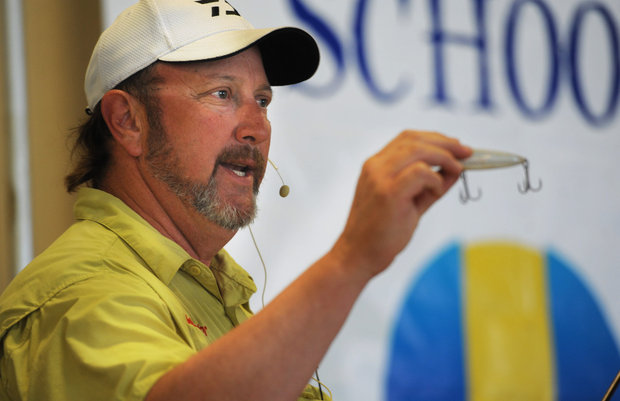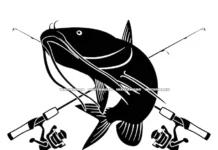 By Neil Taylor, owner www.capmel.com, owner and guide www.strikethreekayakfishing.com
By Neil Taylor, owner www.capmel.com, owner and guide www.strikethreekayakfishing.com
Most of the west central Gulf coast of Florida is a heavily populated area with a lot of anglers chasing a favorite species- Redfish. One key to success is being as quiet as humanly possible. Those sneaky, spooky, wily redfish! Those temperamental, timid, teasing redfish! How can you improve your odds at connecting consistently on this species?
Neil Taylor, kayak-fishing guide and instructor: www.strikethreekayakfishing.com
Kayak fishing accounts for the fastest growing faction of Florida saltwater anglers. Why? The distinct advantages of using a kayak are: Access very shallow waters you could not get to with a power boat, the “low profile” in approaching fish and the “stealth factor.” A kayak angler can enter into an area low to the water and putting off “zero wake”. Even the tiniest little ripple thrown off can alert a gamefish to your presence. Using a kayak to get in to very shallow feed stations can get you into range undetected. Henceforth “the redfish advantage”, kayak anglers can sneak up on the spookiest of species and get into the action better than other methods of approaching these species.
Access to remote areas
There is perhaps no better method to escape the crowded areas and quietly arrive into fish-infested waters undetected by your quarry. Areas less trafficked means fish are in a natural setting and not skittish as they would be in areas where boats crisscross regularly. The most remote areas, you may rarely even see other kayakers. A powerboat is unable to access some of these areas at all. In some situations, a kayak angler will have to get out and drag their craft through the shallowest areas.
Maintenance and Cost
Is this an “advantage?” To some it may be. Kayaks are ”no maintenance”, low cost option to successfully fish inshore waters. The kayaks that are manufactured today are more durable than kayaks of the past, less prone to defects and require zero “upkeep.” Salt water is not damaging to plastic. Stainless steel rigging components nullify the need to replace parts on a regular basis. The bottom line: When your fishing is done, the work is minimal. Compared to the time, effort and expense of fishing from a power boat- advantage: Kayak Fishing. A kayak angler is more likely to make an hour-long fishing trip than an angler who is going to utilize another type of craft. More fishing trips for these shorter trips-“advantage, kayak fishing!”
The Convenience Factor:
Locations to launch a kayak are abundant in the Tampa Bay area and decent in most other Florida locales. Any public area with the smallest access to water is a usable launch. So many of the launches have excellent fishing, often just a stone’s throw from the put-in point.

The Boat, Equipment Choices and Rigging:
The basics of a properly equipped kayak are: An anchor trolley system, a paddle clip or leash, rod holders, a life vest and a whistle. The trolley is important for positioning of the boat by having the anchor coming off various angles of the kayak. The paddle clip or leash allows you to stow the paddle during “fishing time” and also prevents separation from that vital piece of equipment. The vest and whistle are required safety equipment for the kayak.
Multiple rod holders allows different lures for different situations eliminating wasted time changing lures. Lure selection for a kayak angler targeting redfish should consist of an assortment of soft plastic jig tails, on 1/8 or 1/16 jigheads and one of your rods with a lure rigged up “weedless”. The weedless option is going to give you a shot at redfish that are “in the thicket”, shallow grassy areas that are so thick any exposed hook will be impossible to keep “swimming.” One plastic tackle tray should contain all the lures you will need for a full day on the water. In your selection of lures, don’t forget a topwater plug. On the occasions where redfish seem disinterested in anything else, try that topwater lure on them!
You have your kayak and the philosophy on the kayak “advantage” so now what tips do you need to succeed? Easy: Have all your rods rigged and ready to use with your lures rigged up properly so they swim “true.” Have your polarized sunglasses on for glare reduction so you can spot the redfish as you move up a grassflat. Approach the fish from upwind or upcurrent to help make long, accurate casts to the fish. If you choose to deploy an anchor, pick it up and “set” it in the water without creating any noise. Work to make your lures move in a realistic, appealing way that make a redfish want to eat it.
Another great option for the “beginner” is to hire a quality guide to show them how it’s done. Fishing from a kayak is fishing from a seated position, a little different than other fishing venues. Getting the instruction from experts in anything that’s “new” shortens the learning curve for all the skills involved and eliminates the formation of bad habits.

Neil Taylor
“Instructional Kayak Fishing”
Strike Three Kayak Fishing
www.strikethreekayakfishing.com
(Cell) 727-692-6345
LivelyBaits@aol.com
- The Neil Blog… - July 26, 2023
- The Catfish - July 26, 2023
- update - July 22, 2023













